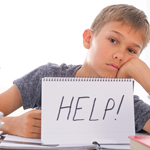
Visit u.org/takenote to learn more and access Take N.O.T.E. in English or Spanish. You’ll find a free digital resource with the tools to notice, observe and track patterns in your child’s behavior.
(BPT)
(BPT) School is so unpredictable this year, it’s hard not to worry about the what ifs. What if my child falls behind due to distance learning? What if my kids have trouble getting back to in-person learning? It’s an anxious time for many parents.
In fact, a recent Understood/YouGov survey of 2,000 parents of 5-to17-yr. olds, shows that 71% are worried that their children will face challenges this year. For parents of kids who are diagnosed with or show signs of learning and thinking differences, that number is 79%. And nearly half (48%) of all parents are worried about their child being left behind because of the “COVID slide.”
The shutdowns last spring gave parents a window into their children’s learning and behavior. And for some, it raised new questions – and concerns.
Questions like: Why is my child so daydreamy? Is it normal for kids to have meltdowns this often? Why is my child still struggling with reading? Do other kids have this much trouble following directions?
Nearly four in 10 (37%) parents surveyed by Understood have noticed new or different behaviors in their child during the pandemic. Trying to make sense of challenges or differences isn’t always easy. But, getting answers allows parents and professionals to get kids support at early as possible.
“Every child is unique, so it’s difficult for caregivers to know which behaviors are normal for their age and which might be flags that something else is going on,” says Bob Cunningham, executive director of learning development for social impact organization Understood. “Families are spending more time together and some may have started to notice things they didn’t before. The good news is there are some easy steps they can take.”
What are learning and thinking differences
Kids develop at different rates, so it can be hard for families to interpret what they’re seeing. Some of these struggles can also be a sign of learning and thinking differences like dyslexia, ADHD and dyscalculia (a learning disability in math).
At least 15 million children in the United States – one in five – learn or think differently. They may struggle with different skills, including reading, writing, math, focus and following directions. Sometimes those challenges are obvious, but other times the signs can be confusing. For example, difficulty with spelling can be a sign of a reading challenge. Not being able to tell time might be a problem with math.
Because the signs of learning and thinking differences aren’t always clear, Understood developed a free tool called Take N.O.T.E. in partnership with the American Academy of Pediatrics. It’s designed to guide families to get answers about what they are seeing in their child.
4 steps to start finding answers
The Take N.O.T.E. tool centers on a simple four-step process:
• Notice if there’s something going on with your child that’s out of the ordinary.
• Observe and keep track of patterns in your child’s behavior.
• Talk to your child, teachers, aides and caregivers about what you’re observing.
• Engage with trusted professionals, like pediatricians.
“Not knowing what different behaviors or struggles mean or how to help can feel stressful and overwhelming for parents and caregivers,” says Cunningham. “These four steps can help you learn more and move down a path to best help your child. Everyone who learns and thinks differently should feel supported at home, at school and at work.” Visit u.org/takenote to learn more and access Take N.O.T.E. in English or Spanish. You’ll find a free digital resource with the tools to notice, observe and track patterns in your child’s behavior. ~ (BPT) ~











 20 lucky winners will win $500 each in prizes totaling $10,000.
20 lucky winners will win $500 each in prizes totaling $10,000. 